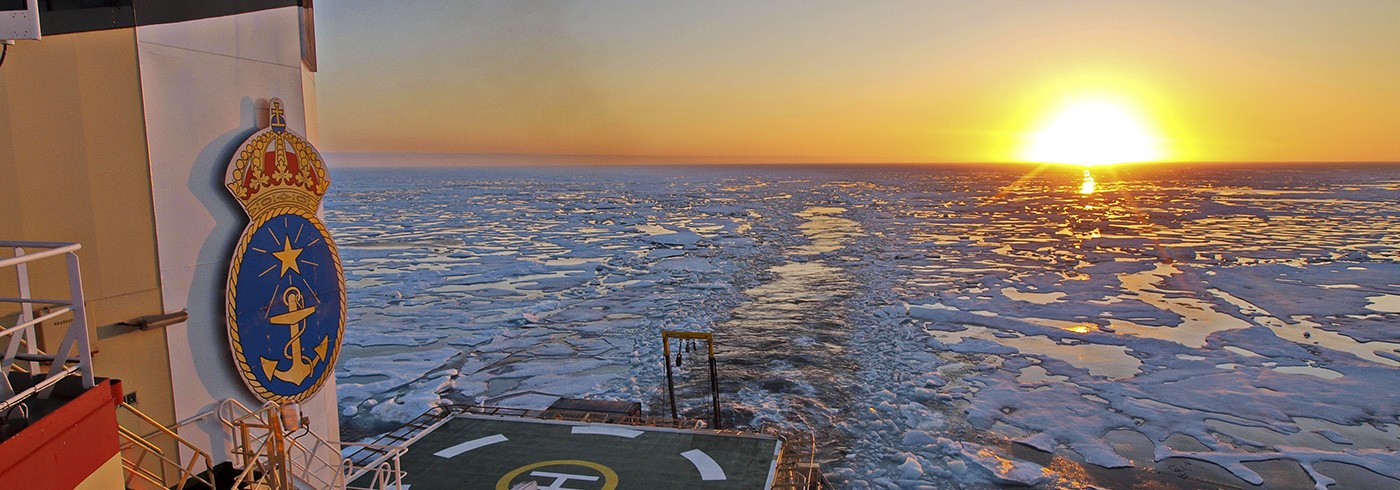
Blizzard during the Arctic night, which slowly has begun to be longer. Photo taken in the headlights of Oden. Photo: Martin Jakobsson
We reached the Arlis Plateau during the evening on September 1st. The planned multibeam survey could start directly. Sea ice in the area generally varied between 30 % and 80 % coverage, although some large open leads existed which allowed us to collect some lines with high quality multibeam. Breaking ice is not good for multibeam mapping because large chunks of ice are frequently dragged below the icebreaker’s hull and block the hull mounted multibeam transducers.

Work with the sediment corer on Oden’s fantail overlooked by the two polar bears. Photo: Martin Jakobsson
Arlis Plateau is heavily scoured by glacier ice and one of our scientific goals was to understand the dynamics of this ice: Where did it come from? How long time ago did it exist? After the surveying, sediment coring and oceanographic station work was planned. In the middle of the station work, we were visited by a polar bear female and her cub. They were not at all afraid of Oden and came closer and closer. After some time, they were next to the ship and had a closer look at us. I wonder if they even seen a coring operation before?


